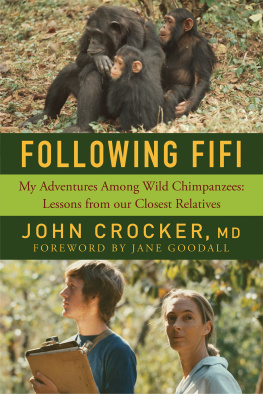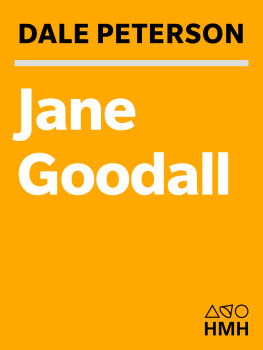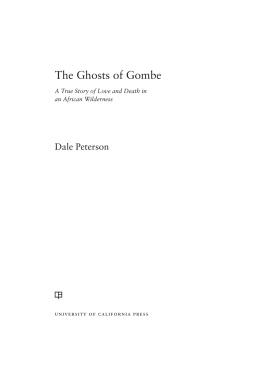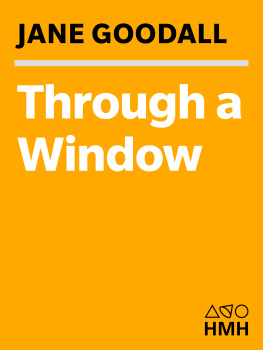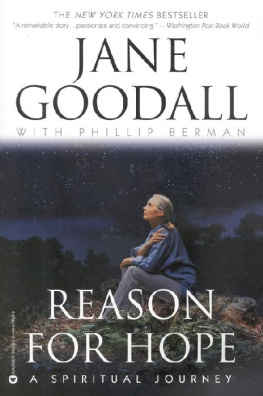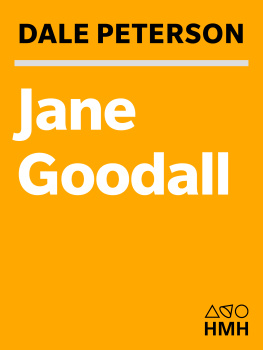
FOLLOWING
FIFI
My Adventures Among Wild Chimpanzees:
Lessons from our Closest Relatives

JOHN CROCKER, MD
FOREWORD BY JANE GOODALL

FOLLOWING FIFI
Pegasus Books Ltd.
148 W. 37th Street, 13th Floor
New York, NY 10018
Copyright 2017 John Crocker, MD
Foreword copyright 2017 Jane Goodall
MAIN PLAYERS IMAGES
, Fifi and Freud. Photo by John Crocker, 1973.
, Figan. Photo by Grant Heidrich, 1974.
, Passion. Photo copyright The Jane Goodall Institute by Derek Bryceson.
, Prof. Photo by John Crocker, 1973.
, Melissa and Gremlin. Photo by John Crocker, 1973.
LINE DRAWINGS
, Map of study site location in Africa. Illustration by Shayna McDonnell, graphic designer, United Creations, Seattle.
, Authors hut in the Gombe forest, 1973. Illustration by Phil Keane, artist and illustrator, Seattle.
First Pegasus Books edition December 2017
Interior design by Maria Fernandez
All rights reserved. No part of this book may be reproduced in whole or in part without written permission from the publisher, except by reviewers who may quote brief excerpts in connection with a review in a newspaper, magazine, or electronic publication; nor may any part of this book be reproduced, stored in a retrieval system, or transmitted in any form or by any means electronic, mechanical, photocopying, recording, or other, without written permission from the publisher.
Library of Congress Cataloging-in-Publication Data is available.
ISBN: 978-1-68177-568-5
ISBN: 978-1-68177-613-2 (e-book)
Distributed by W. W. Norton & Company
www.pegasusbooks.us
This book is dedicated to Jane Goodall
for her heroic daily accomplishments
delivering a message of hope and a sense of purpose to young and old alike.
Over her lifetime, she has inspired millions of people across the globe
to take part in efforts to make our environment a better place
for all living things.
Jane will be happy to know that this book is also dedicated to Fifi,
another mother who furthered our understanding of primate parenting
and the value of patience and reassurance in raising our young.
CONTENTS

J ohn Crocker has written a truly fascinating book. As I read it I was transported back to those wonderful days when I lived in Gombe with my son, Grub, when he was a small child, in those far-off days when bright, highly motivated, and carefully selected undergraduates from the Human Biology program at Stanford University came to help with the collection of data. Many of them, like John, were premed.
It was fascinating to me to watch how the Gombe experiencethe chimpanzees and baboons, the forest, the close contact with a different culture in the form of the young Tanzanian field staffaffected the new students when they first arrived. And I loved watching how they changed. Some were a little startled when they encountered the primitive nature of their accommodations, even though we had tried to prepare them. Some were nervous to start with; others seemed to take everything in their stride. John was quiet, a little shy and reserved. He was very thoughtful, and I could see him take everything in, processing the new information.
The research project assigned to him was to follow four mothers, Fifi, Melissa, Passion, and Nova through the forest and collect information on their interactions with their infants. As the weeks went by, I came to appreciate that John was a really good observer, not afraid, as some were, to use his intuition when trying to understand why the chimpanzees behaved as they did.
I enjoyed talking with him about his ideas. In fact I appreciated those discussions more than he realized. I had little time then for actually observing the chimpanzees, for I was fully occupied with trying to run the research station, write up dataand be a good mother! I sometimes felt a bit lonely, sort of cut off from the camaraderie of the student group. John was one of the few with whom I felt I had a meaningful relationship outside that of teacher and student.
That John would make an excellent family doctor was obvious from the start, for he was always helpful, sensitive, and caring, but it was only much laterespecially after reading an early draft of this bookthat I realized just how profoundly his Gombe experience has influenced him. His patients have surely benefited from his understanding of the human condition, gleaned during his long hours with our closest relatives in a remote forest.
Being a good doctor does not necessarily mean that a person will be a good writer, but John is both. He describes vividly his experiences in the forest, his growing closeness to the chimpanzees, and all that he was learning about them. He shares too his evolving friendship with one of the young Tanzanian field assistants with whom he spent so many hours in the forest, from whom he learned so much, and who, as John discovered years later, learned so much from him. He weaves all these experiences seamlessly into an account of his subsequent experiences as a busy medical practitioner.
It is fascinating to read how Johns observations of chimpanzee children with their mothers and other family members helped him understand the problems of a human child. How understanding the motivation behind the dramatic dominance displays of young male chimpanzees helped him pinpoint the possible cause of unruly behavior in a young human boy. Both the chimpanzees he studied and the Tanzanians he came to know helped John appreciate the importance of community, the emotional support of friends, and the need of our infants to form close and affectionate bonds with one or more trusted adults.
And finally there is the importance of family and community in the lives of chimpanzees and humans, and Johns relationship with his own family. An important part of the book is the trip he took with his teenage son, Tommy, back to Gombe, hoping it would be a good experience for both of them. Would Tommy understand why this tiny national park with its human and animal inhabitants had been so important to John? The description of the father sharing with his son his love of the place where he had learned so much is moving, as is the reunion with Hamisi, the Tanzanian with whom he had formed a friendship that withstood the test of time.
John, I want to thank you for writing this. I have loved reading your accounts of your hours with Fifi and Freud, Melissa and Gremlin, Figan and Mike. It has taken me back to another erabefore I started my life on the road as a conservationist, before you were plunged into the sometimes-unbearable workload of the family doctor in todays world. Not only did it take me back to Gombe, but also reading it made me reflect on how Gombe influenced my life too. I am glad we shared some of that time together, and I am glad that our friendship, too, has lasted over the years.
Jane Goodall

I n June 1973, as my Stanford classmates readied for graduation, I embarked on an eight-month sojourn to study Dr. Jane Goodalls famous chimpanzeesresearch that would forever change my view of the world and of myself. My time with Dr. Goodall and the Gombe chimps would also influence my approach to both fatherhood and the practice of family medicine in the years to come.
Next page
